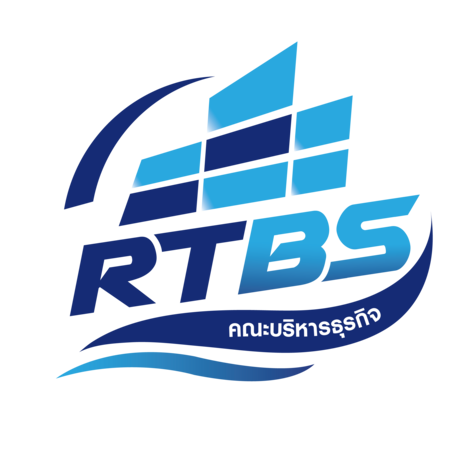DETERMINANTS OF ENTERPRISE RESOURCE PLANNING (ERP) SYSTEMS ADOPTION IN THAI PRIVATE COMPANIES
คำสำคัญ:
Performance Expectancy, Effort Expectancy, Social Influence, Perceived Usefulness, Perceived Ease of Use, Facilitating Conditionsบทคัดย่อ
The purpose of this study is to investigate determinants of Enterprise Resource Planning (ERP) systems adoption among end users who have been experiencing the ERP system at least one year in six Thai private companies. The conceptual framework proposed casual relationship among Performance Expectancy (PE), Effort Expectancy (EE), Social Influence (SI), Perceived Usefulness (PU), Perceived Ease of Use (PEOU), Facilitating Conditions (FC), Intention to Use (IU) and Actual Use (AU). Data collection was made with the sample size of 500 ERP users and were gathered from both offline and online survey. Researcher applied probability and non-probability sampling, using multi-stage sampling which included purposive sampling, stratified random sampling of and convenience sampling. The research applied Structural Equation Model (SEM) and Confirmatory Factor Analysis (CFA) for the data analysis including model fit, reliability, and validity of the constructs. The findings indicated that most of factors presented the significant influence on intention to use except perceived ease of used. Intention to use also has strongest impact on actual use but not facilitating conditions. The recommendations are that further study can extend qualitative method and different schemes of sample size. For practical implication, organization could consider the relevant factors and provide enhancement for successful adoption of ERP systems.
เอกสารอ้างอิง
Ajzen, I. (1991). The theory of planned behavior. Organ. Behav. Hum. Decis. Process, 50, 179-211.
Akinbobola, O., & Adeleke, A. (2013). The Influence of User Efficacy and Expectation on Actual System Use. Interdisciplinary Journal of Information, Knowledge, and Management, 8, 043-057.
Alam, M. S., & Uddin, M. A. (2019). Adoption and Implementation of Enterprise Resource Planning (ERP): An Empirical Study. J. Manag. Res, 6, 84-116.
Alshare, K. A., & Lane, P. L. (2011). Predicting Student-Perceived Learning Outcomes and Satisfaction in ERP Courses: An Empirical Investigation. Communications of the Association for Information Systems, 28(34), doi.org/10.17705/1CAIS.02834
Altin, C., Calisir, F., & Bayram, A. (2007). Understanding the behavioral intention to use ERP systems: An extended technology acceptance model. In International Conference on Industrial Engineering and Engineering Management (pp. 2024-2028). Singapore: IEEE.
Arunkumar, S. (2008). A study on Attitude and Intention Towards Internet Banking with Reference to Malaysian Consumers in Klang Valley Region. International Journal of Applied Management and Technology, 6, 5.
Azjen, I., & Fishbein, M. (1980). Understanding attitudes and predicting social behavior. Englewood Cliffs, New Jersey: Prentice-Hall.
Barrane, F. Z., Karuranga, G. E., & Poulin, D. (2018). Technology Adoption and Discussion: A New Application of the UTAUT Model. Int. J. Innov. Technol. Manag., 15(6), 1950004-1950023. doi.org/10.1142/S0219877019500044
Benjangjaru, B., & Vongurai, R. (2018, June). Behavioral Intention of Bangkokian to Adopt Mobile Payment Services by Type of Users. AU-GSB E-JOURNAL, 11(1), 34. Retrieved from http://www.assumptionjournal.au.edu/ index.php/AU-GSB/article/view/3299/2042
Benmessaoud, C., Kharrazi, H., & MacDorman, K. (2011, January). Facilitators and Barriers to Adopting Robotic-Assisted Surgery: Contextualizing the Unified Theory of Acceptance and Use of Technology. PloS one, 6(1), e16395. doi.org/10.1371/journal.pone.0016395
Bollen, K. A. (1989). Structural Equations with Latent Variables. New York: John Wiley and Sons.
Brown, C. E. (1998). Coefficient of variation. In Applied multivariate statistics in geohydrology and related sciences. Berlin, Germany: Springer.
Catherine, N., Geofrey, K. M., Moya, A. P., & Aballo, G. (2018, January). Effort Expectancy, Performance Expectancy, Social Influence and Facilitating Conditions as Predictors of Behavioral Intentions to Use ATMs with Fingerprint Authentication in Ugandan Banks. Global journal of computer science and technology, 17(5-E).
Chang, M., Cheung, W., Cheng, C., & Yeung, J. (2008). Understanding ERP system adoption from the user's perspective. International Journal of Production Economics. 113, 928-942. doi.org/10.1016/j.ijpe.2007.08.011.
Chao, C. (2019, July). Factors Determining the Behavioral Intention to Use Mobile Learning: An Application and Extension of the UTAUT Model. Frontiers in Psychology, 10, 1652. doi: 10.3389/fpsyg.2019.01652
Davis, F., Bagozzi, R., & Warshaw, P. (1989). User acceptance of computer technology: a comparison of two theoretical models. Management Science, 35(8), 982-1003.
Davis, F. D. (1989). Perceived Usefulness, Perceived Ease of Use, and User Acceptance of Information Technology. MIS Quarterly 13(3), 319-339.
Dwivedi, Y. K., Rana, N. P., Jeyaraj, A., Clement, M., & Williams, M. D. (2019). Re-examining the Unified Theory of Acceptance and Use of Technology (UTAUT): Towards a Revised Theoretical Model. Inf. Syst. Front, 21, 719-734.
Fornell, C., & Larcker, D. F. (1981). Evaluating Structural Equation Models with Unobservable Variables and Measurement Error. Journal of Marketing Research, 18(1), 39-50.
Ghalandari, K. (2012). The effect of performance expectancy, effort expectancy, social influence and facilitating conditions on acceptance of e-banking services in Iran: The moderating role of age and gender. Middle East Journal of Scientific Research, 12(6), 801-807.
Hajiar, S. (2014). A statistical study to develop a reliable scale to evaluate instructors within higher institution. WSEAS Transactions on Mathematics, 13, 885-894.
Hair, J. F., Black, W. C., Babin, B. J., & Anderson, R. E. (2010). Multivariate Data Analysis: A Global Perspective (7th ed.). Upper Saddle River, New Jersey: Pearson Education.
Hair, J., Black, W., Babin, B., Anderson, R., & Tatham, R. (2006). Multivariate Data Analysis (6th ed.). Upper Saddle River, New Jersey: Pearson Education.
Hambleton, R. K. (1978). On the use of cut-off scores with criterion-referenced tests in instructional settings. Journal of Educational Measurement, 15, 177-290.
Henseler, J., Ringle, C. M., & Sarstedt, M. (2015). A new criterion for assessing discriminant validity in variance-based structural equation modeling. Journal of the Academy of Marketing science, 43(1), 115 - 135.
Huck, S. W. (2007). Reading Statistics and Research (5th Ed.). New York: Pearson.
Jaradat, M., & Al-Mashaqba, A. (2014). Understanding the adoption and usage of mobile payment services by using TAM3. Int. J. of Business Information Systems, 16, 271 - 296. doi.org/10.1504/IJBIS.2014.063768
Jaruwanakul, T. (2021). Key Influencers of Innovative Work Behavior in Leading Thai Property Developers. AU-GSB E-JOURNAL, 14(1), 61-70. http://www.assumptionjournal.au.edu/index.php/AU-GSB/article/view/5456
Kallner, A. (2018). Laboratory Statistics (2nd Ed.). Cambridge, MA: Elsevier.
Kanwal, S., Irfan, D., & Manarvi, I. (2010). Evaluating Erp Usage Behavior of Employees and Its Impact On Their Performance: A Case Of Telecom Sector. Global Journal of Computer Science and Technology, 17(9), 34-40.
Kitcharoen, K., & Vongurai, R. (2021). Factors Influencing Customer Attitude and Behavioral Intention Towards Consuming Dietary Supplements. AU-GSB E-JOURNAL, 13(2), 94-109, Retrieved from http://www.assumptionjournal. au.edu/index.php/AU-GSB/article/view/5231
Kline, R. B. (2011). Principles and practice of structural equation modeling (3rd ed.). New York: Guilford Press.
López-Nicolás, C., Molina-Castillo F. J., & Bouwman, H. (2008). An assessment of advanced mobile services acceptance: Contributions from TAM and diffusion theory models. Information & Management, 45(6), 359-364.
Maillet, É., Mathieu, L., & Sicotte, C. (2015). Modeling factors explaining the acceptance, actual use and satisfaction of nurses using an electronic patient record in acute care settings: an extension of the UTAUT. Int. J. Med. Inform, 84, 36-47. doi.org/10.1016/j.ijmedinf.2014.09.004
McCue, I. (2020). The History of ERP. Retrieved from https://www.netsuite.com/ portal/resource/articles/erp/erp-history.shtml
Onputtha, C., & Siriwichai, C. (2021). The Impact of Green Corporate Identity and Green Personal-Social Identification on Green Business Performance: A Case Study in Thailand. Journal of Asian Finance, Economics and Business, 8(5), 0157-0166.
Owusu, K. K. (2019). Acceptance and use of mobile banking: An application of UTAUT2. J. Enterp. Inf. Manag., 32, 118-151.
Pang, A. (2015). Top 100 ERP Software Vendors. Retrieved from https://www.appsruntheworld.com/top-100-erp-vendors-in-2012/
Pedroso, R., Zanetello, L., Guimaraes, L., Pettenon, M., Goncalves, V., Scherer, J., Kessler, F., & Pechansky, F. (2016). Confirmatory factor anlaysis (CFA) of the crack use relapse scale (CURS). Archives of Clinical Psychiatry, 43(3), 37-40.
Rajan, C., & Baral, R. (2015, June). Adoption of ERP system: An empirical study of factors influencing the usage of ERP and its impact on end user. IIMB Management Review, 27(2), 105-117. doi.org/10.1016/j.iimb.2015.04.008
Roul, R. (2021). 60 Must-Know ERP Statistics Before Making a Buying Decision. Retrieved from https://learn.g2.com/erp-statistics
Rovinelli, R. J., & Hambleton, R. K. (1977). On the use of content specialists in the Assessment of criterion-referenced test item validity. Dutch Journal of Educational Research, 2(2), 49-60.
Saade, R., & Bahli, B. (2005). The impact of cognitive absorption on perceived usefulness and perceived ease of use in on-line learning: an extension of the technology acceptance model. Information Management, 42, 317-327.
Salahshour Rad, M., Nilashi, M., & Mohamed Dahlan, H. (2018). Information technology adoption: a review of the literature and classification. Univ Access Inf Soc, 17, 361-390. doi.org/10.1007/s10209-017-0534-z
Shin, D. (2010) Modeling the Interaction of Users and Mobile Payment System: Conceptual Framework. International Journal of Human–Computer Interaction, 26(10), 917-940. doi.org/10.1080/10447318.2010.502098
Sica, C., & Ghisi, M. (2007). The Italian versions of the Beck Anxiety Inventory and the Beck Depression Inventory-II: Psychometric properties and discriminant power. In M.A. Lange (Ed.), Leading - Edge Psychological Tests and Testing Research (pp. 27-50). Nova Science.
Szajna, B. (1993). Determining information system usage: some issues and examples. Information and Management, 25, 147-154.
Tao, Z. (2011). Understanding mobile Internet continuance usage from the perspectives of UTAUT and flow. Inf. Dev., 27, 207-218.
Triandis, H. C. (1979). Values, attitudes, and interpersonal behavior. Nebraska Symposium on Motivation, 27, 195-259.
Trustradius. (n.d.). Top Rated Enterprise Resource Planning (ERP) Products. Retrieved from https://www.trustradius.com/erp
Turner, R., & Carlson, L. (2003). Indexes of Item-Objective Congruence for Multidimensional Items. International Journal of Testing, 3, 163-171. doi.org/10.1207/S15327574IJT0302_5.
Uddin, M., Alam, M., Mamun, A., Uz-Zaman Khan, T., & Akter, A. (2020). A Study of the Adoption and Implementation of Enterprise Resource Planning (ERP): Identification of Moderators and Mediator. Journal of Open Innovation Technology Market and Complexity, 6, 1-18. doi.org/10.3390/joitmc6010002
Venkatesh, V., & Morris, M. G. (2000). Why don’t men ever stop to ask for directions? Gender, social influence, and their role in technology acceptance and usage behavior. MIS Q. 24, 115-139.
Venkatesh, V., Morris, M. G., Davis, G. B., & Davis, F. D. (2003). User acceptance of information technology: Toward a unified view. MIS Q, 27, 425-478.
Weinrich, K. I., & Ahmad, N. (2009). Lessons learned during a decade of ERP experience: a case study. International Journal of Enterprise Information Systems, 5(1), 55-75.
ดาวน์โหลด
เผยแพร่แล้ว
รูปแบบการอ้างอิง
ฉบับ
ประเภทบทความ
สัญญาอนุญาต
บทความที่ได้รับการตีพิมพ์เป็นลิขสิทธิ์ของ ผู้นิพนธ์
ข้อความที่ปรากฏในบทความแต่ละเรื่องในวารสารวิชาการเล่มนี้เป็นความคิดเห็นส่วนตัวของผู้เขียนแต่ละท่านไม่เกี่ยวข้องกับมหาวิทยาลัยเทคโนโลยีราชมงคลธัญบุรี และคณาจารย์ท่านอื่น ในมหาวิทยาลัยฯ แต่อย่างใด ความรับผิดชอบองค์ประกอบทั้งหมดของบทความแต่ละเรื่องเป็นของผู้เขียนแต่ละท่าน หากมีความผิดพลาดใดๆ ผู้เขียนแต่ละท่านจะรับผิดชอบบทความของตนเองแต่ผู้เดียว









